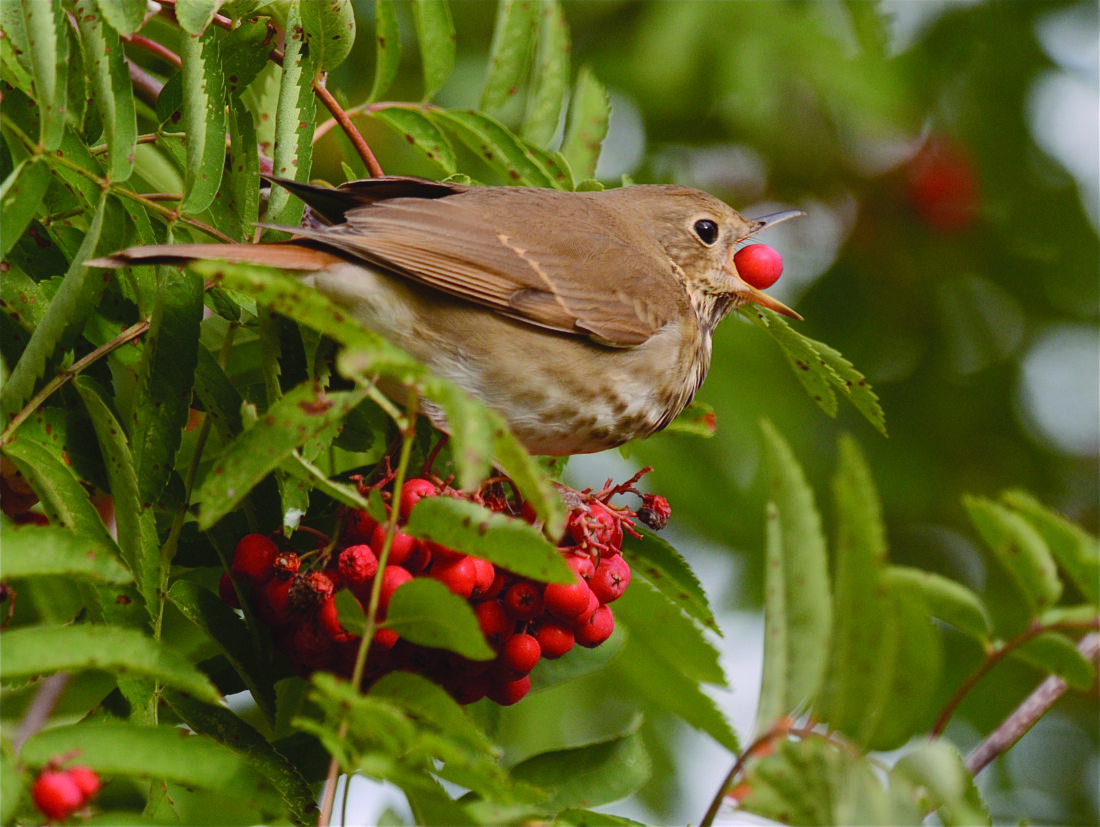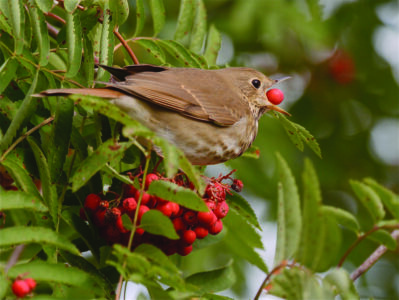What’s Flying: Migration still has a lot to show

STEWART
“October sky never looked more charming nor the sublime leaves of the trees so graceful.” – Avijeet Das
Coral and turquoise morning skies are an extra special start to October skies in the Upper Peninsula. Fall with its ever-changing conditions provides a great array of clouds over Lake Superior too, with plenty of low morning stratus blankets, dappled with puffs of smaller dawn clouds racing past catching sunrise colors. Autumn evenings over the lake are equally spectacular with huge fluffy cumulous clouds catching the late afternoon and early evening peachy-orange hues.
Some of those clouds seem to be catching the reflections of the autumnal shades radiating from the maples, oaks, and aspens below. The dry conditions in September have left the trees a jigsaw of subdued and bright colors, fighting to hold on during the recent windy days. Those winds have carried off many of the late migrants, happy to have a tailing wind from the North to briskly move them closer to their winter homes. Migration continues to provide only short glimpses of some of the flocks that have stopped in the area. Even migrant goose flocks stopping on area fields and golf courses seem to be a bit smaller this year and have not had long stays before continuing.
Dark-eyed juncos have been seen in yards, fields, and open areas in the woods recently. Happily, these flocks often contain small numbers of white-throated, chipping, song, vesper, white-crowned, American tree, Harris’s, and fox sparrows. While the first four on this list are U.P. summer residents, many of the sparrows being seen now may well be migrants from Canada making their way south for the winter. Nearly all will head farther south, at least to the southern tip of Lake Michigan, but most will drop below the long-term winter snow lines in the southern tier of states.
Fox sparrows may be one of the favorites of local birders because they are only seen during migration, coming down from Alaska and northern Canada and are definitely one of the most colorful. They do have seven subspecies, but all have some degree of rusty red hues in their plumage. Fox sparrow songs are also among the most melodic of the sparrows and are almost fluty like thrushes.

A hermit thrush feeds. (Scot Stewart photo)
Common grackles are still turning up in the area, occasionally with some late red-winged blackbirds. Both have been seen in Marquette and Harvey. This is an unusually late date to still be seeing grackles here. Their summer range does extend all the way to Hudson’s Bay, and they are extremely opportunistic in their feeding habits. Their normal summer diet consists of seeds and invertebrates, but they have been observed eating small animals like frogs, salamanders, mice, and fish and have even been seen picking leeches off live turtle shells at ponds. They use a rough ridge on their upper bills to slice through acorn shells too. Unfortunately, they are serious threats to corn crops, eating both newly sprouted plants and ripe corn. Like the sparrows they head south of snow to feed mostly on the ground. It was an extremely productive year for them in the northern U.P., visiting local feeders all summer.
Duck migration is still going strong, as evidenced by the solid numbers at Whitefish Point this past week. While dabbling duck numbers have dropped off, there are still solid flocks of both scaup species and red-breasted mergansers. All three scoters are making their way through too. In Marquette there have just been a few scaup and redheads along with both horned and red-necked grebes in the Lower Harbor. A nice flock of 43 ring-necked ducks was seen on AuTrain Lake with mallards and a larger flock of distant unidentifiable ducks.
The bulk of the diving ducks are yet to come, with buffleheads, common goldeneyes, long-tailed ducks and more mergansers still to come. Their arrival in the Lower Harbor will come when the conditions farther north turn to more wintry.
Back at Whitefish Point, birders have been treated to several Sabine’s gulls passing through on their fall migration from the very High Arctic of Alaska and Canada, to winter along the Pacific Coast from Mexico down to South America. They are small gulls, looking almost tern-like, with black heads in breeding plumage.
Some of their features are notable though. Just an inch and a half longer than mourning doves, because they are ocean goers, their 33-inch wingspan is nearly double that of the doves’ 18 inches. The Sabine’s gulls have very distinct black triangles at the tips of their wings making it a bit easier to identify these rare visitors to the area while they are on the wing. Like most of the gulls visiting from outside their normal breeding grounds here, stops by Sabine’s are unfortunately extremely rare.
The last wave of thrushes has been migrating through the U.P. this week. Hermit thrushes, the most common of the quartet of veeries, Swainson’s, gray-cheeked, hermit thrushes here is making a big push south. They are another bird with a one very visible, distinctive key identification, their rusty-colored tails. During the summer they are more frequently heard than seen with their gorgeous songs frequently heard at dusk. They spend more of their time feeding on the ground and even have ground nests for their robin-blue eggs.
- A hermit thrush feeds. (Scot Stewart photo)
- STEWART
Other prominent migrants still making their presence noticeable are the continuing flocks of American pipits, horned larks, and Lapland longspurs. The only one left to begin its stops through the U.P. is the snow bunting and conditions up north will have their say in the buntings’ arrival. Migration still has lots to show!




